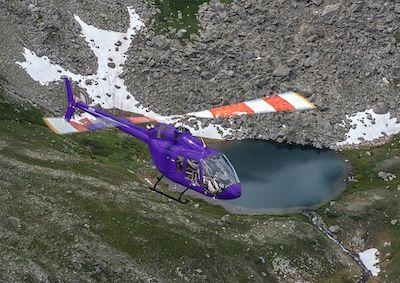Tue, Dec 03, 2019
Outlines Requirements For Crash-Resistant Fuel Systems, Seats And Other Structures
The FAA has published a tool kit for helicopter operators outlining requirements for crash-resistant systems and structures that go into effect in April, 2020.

The agency says that helicopters equipped with crash resistant fuel systems, crash resistant seats and structures provide the highest level of protection for pilots and passengers. A crash resistant fuel system increases the likelihood of surviving a helicopter crash due to a reduced threat of injuries from fire. Crash resistant seats and structures increase the probability of surviving the initial collision from an accident.
In the FAA Reauthorization Act of 2018, Section 317 prohibits helicopters manufactured after April 5, 2020, from flying in U.S. airspace unless certified with a crash resistant fuel system.
Crash resistant fuel systems increase safety for occupants by decreasing or delaying a post-crash fire. Systems that meet the FAA’s regulatory requirement minimize fuel leaks and lessen fuel ignition sources. Crash resistant fuel systems are required for all helicopter models that were certified after 1994. However, the requirement did not apply to newly built helicopters if the original design was certified before 1994. Most newly built helicopters continued to be those certified before 1994. As a result, nearly 25 years later, a low percentage of U.S. helicopters (about 15 percent) meet the regulatory requirement.
Similar to fuel systems, the design requirements for crash resistant seats and structures also improve survivability of a crash. They absorb a greater amount of the crash energy and they can prevent an occupant’s head from hitting the interior of the helicopter.
Due to the FAA regulatory requirement, all helicopter models certified after 1989 must have crash resistant seats and structures. However, if the original design was certified before 1989, the regulatory requirement does not apply. As a result, 30 years later, a low percentage of U.S. helicopters (about 10 percent) meet the regulatory requirement.
(Source: FAA. Image from file)
More News
From 2023 (YouTube Version): Legacy of a Titan Robert (Bob) Anderson Hoover was a fighter pilot, test pilot, flight instructor, and air show superstar. More so, Bob Hoover was an i>[...]
Get The Latest in Aviation News NOW on Instagram Are you on Instagram yet? It's been around for a few years, quietly picking up traction mostly thanks to everybody's new obsession >[...]
Aero Linx: B-52H Stratofortress The B-52H Stratofortress is a long-range, heavy bomber that can perform a variety of missions. The bomber is capable of flying at high subsonic spee>[...]
Altimeter Setting The barometric pressure reading used to adjust a pressure altimeter for variations in existing atmospheric pressure or to the standard altimeter setting (29.92).>[...]
"Knowing that we play an active part in bettering people's lives is extremely rewarding. My team and I are very thankful for the opportunity to be here and to help in any way we ca>[...]
 Classic Aero-TV: Remembering Bob Hoover
Classic Aero-TV: Remembering Bob Hoover ANN FAQ: Follow Us On Instagram!
ANN FAQ: Follow Us On Instagram! ANN's Daily Aero-Linx (05.15.24)
ANN's Daily Aero-Linx (05.15.24) ANN's Daily Aero-Term (05.15.24):Altimeter Setting
ANN's Daily Aero-Term (05.15.24):Altimeter Setting Aero-News: Quote of the Day (05.16.24)
Aero-News: Quote of the Day (05.16.24)



